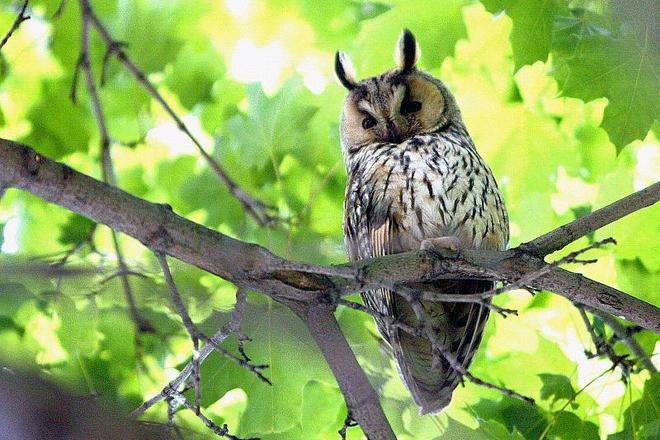A PARLIAMENT of almost two dozen protected long-eared owls (asio otus) has unexpectedly settled in the tops of conifers near the municipality of Koš in the Upper Nitra region. Gardener Valent Hudec took fright when he spotted them in mid February: no wonder, as their wingspan is up to 95 centimetres and a female can weigh 300 grams.
Later, however, he found that they only sleep in the trees during the day, and set out to hunt towards evening. He counted 14 of them, but said he thought there must be more. As he had never seen so many owls together before, he notified a well-known local ornithologist, Vladimír Slobodník from Prievidza.
Slobodník confirmed to the TASR newswire that such a large number of long-eared owls gathering in one place is unusual for the Upper Nitra region. This is the only owl species that tends to flock and hunt together. He went to see them with his son Roman, also an ornithologist and a postgraduate student at the Faculty of Natural Sciences of the University of Constantine the Philosopher in Nitra. The younger Slobodník’s thesis focuses on the issue of birds in Slovakia, so he leapt at the opportunity to study a flock of long-eared owls during the winter. Together, they gathered items from under the trees where the owls are nesting. For ornithologists, such material is the best way to determine the birds’ diets and estimate their number.
Vladimír Slobodník said that the owls had come to the area to hunt for voles and mice. Several gardeners breed pets and small livestock in the area, and so rodents also like to dwell there. The owls’ recovered leftovers included the undigested bones and hair of rodents. The presence of feathers suggested that from time to time the owls also catch and eat small songbirds.
Slobodník said that farmers have cut down many shrubs and trees on agricultural properties in recent years and thereby prevented long-eared owls – or common kestrels (falco tinnunculus) which, unlike owls, hunt during the day – from settling there.
But such birds of prey can be a simple and cheap source of protection for harvest crops from small pests, Slobodník concluded.



 A long-eared owl. (source: Sme – Ján Krošlák)
A long-eared owl. (source: Sme – Ján Krošlák)